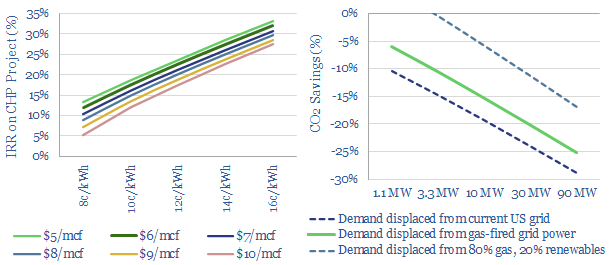Overbuilding renewables may have unintended consequences, making power grids more expensive and less reliable. Hence more businesses may choose to generate their own power behind the meter, installing combined heat and power systems fuelled by natural gas. Modelled IRRs already reach 20-30%. Capturing waste heat also boosts efficiency to 70-80%, which can be 2x higher than grid power, lowering total CO2 by 6-30%. This 17-page note outlines the opportunity and who might benefit.
Overbuilding renewables could make grids more expensive and less reliable. The mechanics of this challenge are modelled out and explained on pages 2-9.
Expensive and unreliable grids have historically been the main motivator for installing combined heat and power systems behind the meter. The theory, technical details and rationale for these CHP systems are explained on pages 10-11.
Economics of combined heat and power and reviewed in detail on pages 12-14, focusing upon IRRs and their sensitivity to input variables.
Examples of CHP installations are presented on page 15, to identify details and characteristics of prior projects.
Companies that may benefit from the theme are discussed on pages 16-17. They range from mega-cap turbine manufacturers to small-cap stocks and private companies with novel technologies.
